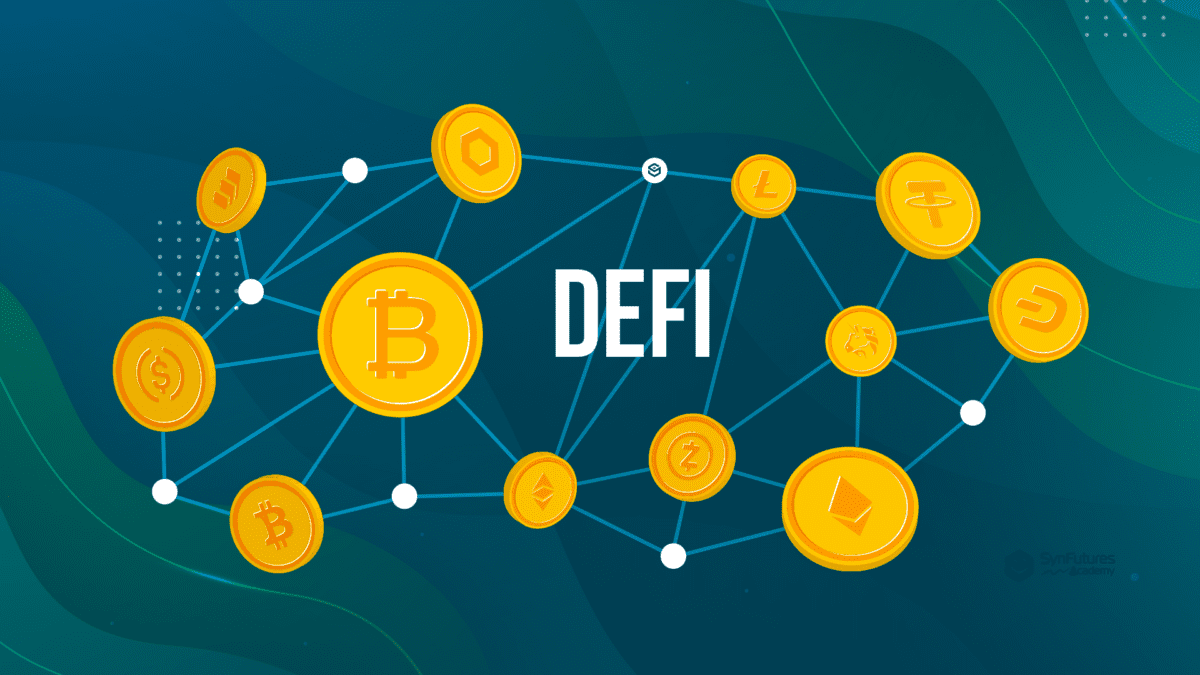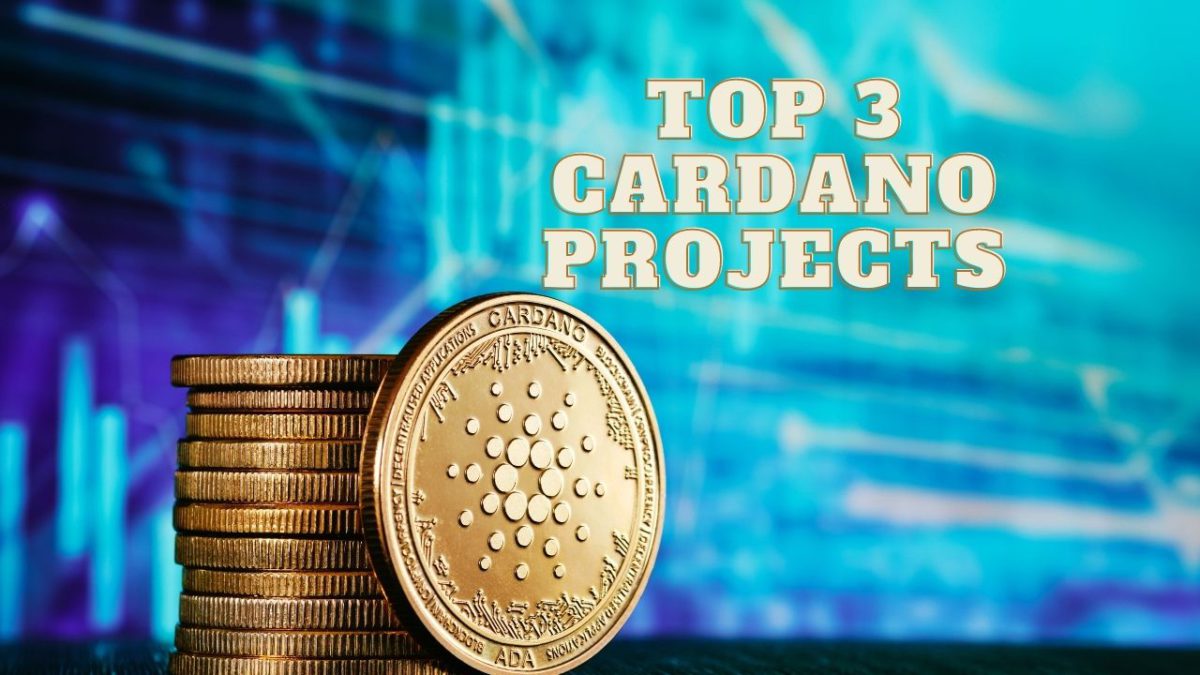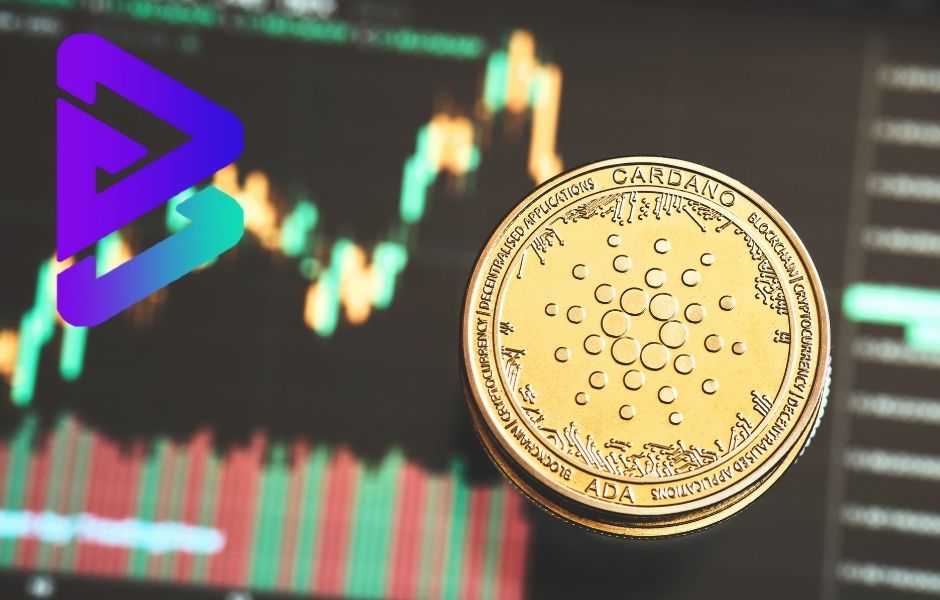DeFi Development: Top 10 Intriguing Security Considerations That Can’t Be Ignored
The financial sector is undergoing a significant transformation fueled by Decentralized Finance (DeFi). This innovative ecosystem empowers individuals to participate in financial activities like borrowing, lending, trading, and asset management without relying on traditional intermediaries. As DeFi continues to gain traction, the demand for skilled developers to build secure and robust DeFi applications (dApps) is skyrocketing. This guide delves into the world of DeFi development, equipping you with the knowledge and resources to navigate this exciting yet complex landscape.
Understanding DeFi: The Core Principles
DeFi applications operate on blockchain networks, fostering transparency, security, and immutability. Here are some fundamental concepts underpinning DeFi:
-
Decentralization: DeFi eliminates the need for central authorities like banks or financial institutions. Transactions are facilitated through smart contracts – self-executing code stored on the blockchain – ensuring trust and automation within the system.
-
Permissionless Finance: DeFi promotes open access to financial services. Anyone with an internet connection and a crypto wallet can participate in DeFi protocols, regardless of location or credit history.
-
Tokenization: DeFi heavily relies on crypto tokens. These digital assets represent tradable units of value within the DeFi ecosystem, facilitating various financial activities.
Unveiling the Building Blocks of DeFi Development
The realm of Decentralized Finance (DeFi) is a captivating landscape brimming with innovation and immense potential. As DeFi disrupts traditional financial systems, the demand for skilled developers to construct secure and robust DeFi applications is surging. But before embarking on your DeFi development odyssey, it’s crucial to establish a strong foundation in the essential building blocks that underpin these transformative applications. Here’s a comprehensive exploration of the core elements that empower you to build the future of finance:
1. Blockchain Technology: The Bedrock of Decentralization
At the heart of DeFi lies blockchain technology. This distributed ledger technology provides the secure and transparent infrastructure upon which DeFi applications are built. Here’s a closer look at its significance:
- Immutability and Transparency: Transactions recorded on a blockchain are permanent and tamper-proof. This fosters trust and transparency within DeFi ecosystems, as all participants can verify the legitimacy of transactions.
- Decentralization: Blockchain technology eliminates the need for centralized intermediaries like banks. This empowers users to have greater control over their financial assets and conduct transactions directly with each other.
- Smart Contracts: Self-executing contracts encoded on the blockchain automate DeFi functionalities. These contracts define the rules and conditions that govern interactions within the DeFi application, ensuring trustless and secure execution.
2. Smart Contracts: The Engines of DeFi Applications
Smart contracts are the lifeblood of DeFi applications. Written in programming languages like Solidity (for Ethereum), these self-executing contracts dictate the functionalities and logic behind DeFi protocols. Here’s a deeper dive into their role:
- Automating DeFi Processes: Smart contracts automate core DeFi functionalities like lending, borrowing, trading, and asset management. This eliminates the need for manual intervention and human error, streamlining DeFi operations.
- Enforcing Rules Securely: Smart contracts enforce the pre-defined rules and conditions governing interactions within the DeFi application. This ensures trustless execution and minimizes the risk of fraud or manipulation.
- Immutable and Transparent: Once deployed on the blockchain, smart contracts are immutable. This provides security and transparency, as everyone can view the code and understand how the DeFi application operates.
3. Wallets and Decentralized Exchanges (DEXs): The Tools of DeFi Interaction
Users interact with DeFi applications through specialized tools:
- Wallets: Crypto wallets store users’ private keys and digital assets securely. These wallets allow users to connect to DeFi applications, interact with smart contracts, and manage their DeFi holdings. Popular DeFi wallets include MetaMask and WalletConnect.
- Decentralized Exchanges (DEXs): Unlike traditional exchanges controlled by a central authority, DEXs facilitate peer-to-peer trading of cryptocurrencies and DeFi tokens. DEXs leverage smart contracts to automate trading processes and ensure secure, transparent transactions. Popular DEXs include Uniswap, SushiSwap, and PancakeSwap.
4. Tokenomics: The Lifeblood of a DeFi Ecosystem
Tokenomics refers to the design and distribution of tokens within a DeFi application. These tokens play a crucial role in the DeFi ecosystem:
- Governance: Some DeFi applications utilize governance tokens that empower holders to participate in voting on critical decisions, shaping the future of the protocol.
- Utility Tokens: These tokens grant users access to specific functionalities within the DeFi application, such as borrowing, lending, or participating in yield farming activities.
- Incentives: DeFi applications often distribute tokens as rewards for users who participate in various activities like providing liquidity or contributing to the network.
5. Oracles: Bridges Between Blockchains and the Real World
DeFi applications often require access to external data feeds to function effectively. Oracles act as bridges, fetching data from the real world (e.g., stock prices, exchange rates) and securely delivering it to DeFi smart contracts. This allows DeFi applications to react to real-world events and offer functionalities like decentralized price feeds for trading or asset valuation.
6. Security Considerations: Building Trust in a Decentralized World
Security is paramount in DeFi development. Here are some crucial aspects to consider:
- Smart Contract Audits: Even a minor vulnerability in a smart contract can lead to devastating consequences. Rigorous audits by reputable security firms are essential to identify and rectify potential vulnerabilities before deployment.
- Secure Coding Practices: Employing secure coding practices throughout the development lifecycle is crucial. Utilize well-established libraries and frameworks with a proven track record of security.
By mastering these building blocks, you’ll be well-equipped to embark on your journey as a DeFi developer. Remember, DeFi is a rapidly evolving landscape. Stay updated on emerging trends, security best practices, and innovative protocols to ensure your DeFi applications are not only secure but also at the forefront of this transformative revolution.
Also, read – Top 5 Amazing Ways AI Coexist With DeFi’s Core Values: Centralization vs. Decentralization
The DeFi Development Process: A Step-by-Step Guide to Building the Future of Finance
The world of Decentralized Finance (DeFi) beckons, offering a revolutionary approach to financial services. As a developer, you hold the key to unlocking this potential by crafting secure and innovative DeFi applications. But where do you begin? This step-by-step guide will illuminate the DeFi development process, equipping you to navigate the journey from concept to a functional DeFi application:
1. Conception: Birthing Your DeFi Idea
Every DeFi application starts with a compelling idea. Here’s where you lay the groundwork:
- Identifying a Market Need: DeFi thrives on solving real-world problems. Conduct thorough market research to identify unmet needs or inefficiencies within the traditional financial system. Can you streamline lending and borrowing processes? Offer innovative investment opportunities?
- Defining Your Value Proposition: What makes your DeFi application unique? How will it address the identified market need in a novel and disruptive way? Clearly define the value proposition that sets your application apart from existing solutions.
2. Planning and Design: Charting the Course
With a clear idea in mind, meticulous planning lays the foundation for success:
- Choosing the Right Blockchain Platform: Not all blockchains are created equal. Consider factors like scalability, security, transaction fees, and development tools when selecting a platform that aligns perfectly with your DeFi application’s specific needs. Popular options include Ethereum, Solana, Binance Smart Chain, and Avalanche.
- Smart Contract Design and Development: Smart contracts are the backbone of DeFi applications. This is where you define the core functionalities and logic that govern user interactions within your application. Solidity is a popular programming language for smart contract development on the Ethereum blockchain. Ensure secure coding practices and conduct thorough audits to minimize vulnerabilities.
- Tokenomics Design: Craft a well-defined tokenomic model that outlines the creation, distribution, and utility of tokens within your DeFi ecosystem. Consider factors like governance, utility functionalities, and incentive structures to ensure a sustainable and thriving ecosystem.
3. Development and Testing: Building and Fortifying Your Creation
With a blueprint in place, it’s time to translate your vision into reality:
- Front-End Development: Design a user-friendly and intuitive interface (UI) for your DeFi application. Prioritize clear instructions, user-friendly navigation, and real-time data visualization to enhance user experience. Consider mobile compatibility to cater to users on the go.
- Smart Contract Development and Testing: Develop your smart contracts adhering to secure coding practices. Utilize unit testing frameworks to ensure individual functionalities operate as intended. Conduct rigorous smart contract audits by reputable security firms to identify and rectify potential vulnerabilities before deployment.
- Integration and Back-End Development: Integrate your smart contracts with the chosen blockchain platform and any necessary APIs (Application Programming Interfaces). Develop robust back-end systems to handle data storage, user authentication, and communication with the blockchain.
4. Deployment and Launch: Bringing Your DeFi App to Life
The moment of truth arrives! Here’s how to usher your DeFi application into the world:
- Deployment: Deploy your smart contracts and application onto the chosen blockchain network. This process often involves paying transaction fees associated with the chosen platform.
- Liquidity Provisioning: DeFi applications often rely on liquidity pools to facilitate seamless transactions. Seed the initial liquidity pool with your own tokens or incentivize users to contribute their assets to jumpstart the ecosystem.
- Marketing and Community Building: Spread the word about your DeFi application! Create a strong online presence, engage with potential users on forums and social media, and foster a thriving community around your project.
5. Maintenance and Improvement: Ensuring Continuous Growth
The journey doesn’t end with launch. Here’s how to ensure your DeFi application thrives:
- Security Monitoring: Continuously monitor your DeFi application for potential vulnerabilities. Stay updated on the latest security threats and implement necessary patches to safeguard user assets.
- Community Engagement: Actively engage with your user base. Gather feedback, address concerns, and incorporate valuable suggestions into your development roadmap to enhance the application and user experience.
- Ongoing Development: The DeFi landscape is constantly evolving. Continuously iterate on your DeFi application, integrate new functionalities, and adapt to emerging trends to stay ahead of the curve.
By following these steps and remaining adaptable in this dynamic environment, you’ll be well-equipped to navigate the DeFi development process and contribute to the future of decentralized finance. Remember, building a successful DeFi application requires not only technical expertise but also a deep understanding of the DeFi ecosystem, its challenges, and its immense potential to revolutionize the financial world.
Top 10 Security Considerations in DeFi Development: Fortifying Your Decentralized Fortress
The realm of Decentralized Finance (DeFi) pulsates with innovation and immense potential. However, this nascent landscape also presents unique security challenges. As a DeFi developer, safeguarding user assets and ensuring the integrity of your application is paramount. Here are the top 10 security considerations to fortify your DeFi development process and build trust within the DeFi ecosystem:
1. Smart Contract Audits: A Line of Defense Against Vulnerabilities
- Imperative for Secure Deployment: Smart contracts are the cornerstone of DeFi applications. Even a minor vulnerability in a smart contract can lead to catastrophic financial losses. Conduct rigorous smart contract audits by reputable security firms before deployment. These audits identify potential vulnerabilities in logic, code, and access controls, mitigating risks associated with exploits and hacks.
2. Secure Coding Practices: Building a Robust Foundation
- Prioritizing Secure Coding Principles: Employ secure coding practices throughout the entire development lifecycle. Utilize well-established and secure libraries and frameworks that have a proven track record of withstanding attacks. Adhere to best practices like input validation, access control, and proper error handling to minimize potential vulnerabilities.
3. Reentrancy Attacks: Shielding Against Recursive Exploits
- Understanding Reentrancy Risks: Reentrancy attacks exploit vulnerabilities in smart contracts that allow attackers to call a function multiple times within a single transaction. Implement reentrancy safeguards like checks-effects-interactions (CEI) patterns or utilize reentrancy-safe libraries to prevent these malicious attempts.
4. Flash Loan Attacks: Plugging the Liquidity Gap
- Mitigating Flash Loan Risks: Flash loan attacks exploit temporary liquidity imbalances to manipulate DeFi protocols. Carefully design your smart contracts to minimize the impact of flash loan attacks. Consider implementing measures like liquidity locks or requiring collateral to deter attackers.
5. Access Control Mechanisms: Delimiting User Permissions
- Enforcing Granular Access Controls: Implement granular access control mechanisms within your smart contracts. Define clear roles and permissions for users and external applications interacting with your DeFi protocol. This minimizes the potential damage caused by compromised accounts or unauthorized access attempts.
6. Denial-of-Service (DoS) Attacks: Maintaining System Availability
- Safeguarding Against System Overload: DeFi applications can be targeted by DoS attacks aimed at disrupting normal operations. Implement robust measures to mitigate DoS attacks, such as rate limiting, gas fee mechanisms, and circuit breaker patterns to ensure the continued availability of your DeFi application.
7. Front-Running Attacks: Leveling the Playing Field for Users
- Thwarting Transaction Manipulation: Front-running attacks involve exploiting the predictability of transactions to gain an unfair advantage. Utilize techniques like random transaction delays or hidden transaction fees to make transaction ordering less predictable and deter front-running attempts.
8. Rug Pulls and Exit Scams: Building User Trust and Transparency
- Promoting Transparency and Open-Source Development: Consider open-sourcing your smart contracts to foster community review and enhance trust. Clearly document the functionalities and limitations of your DeFi application. Avoid making unrealistic promises or engaging in activities that suggest an exit scam.
9. Decentralized Oracles: Mitigating Trusted Third-Party Risks
- Minimizing Reliance on Centralized Data Feeds: DeFi applications often rely on oracles to fetch external data. Minimize your reliance on centralized oracles, as their compromise could manipulate data feeds and disrupt your DeFi application. Explore decentralized oracle networks for a more secure and trustless approach.
10. Continuous Security Monitoring: Vigilance in a Dynamic Landscape
- Proactive Threat Detection and Response: The DeFi landscape is constantly evolving, and new attack vectors may emerge. Implement ongoing security monitoring practices to identify potential vulnerabilities and threats promptly. Be prepared to deploy patches and updates to address security concerns as they arise.
By meticulously addressing these security considerations, you can fortify your DeFi application and contribute to a more secure and trustworthy DeFi ecosystem. Remember, security is an ongoing process, not a one-time fix. Continuous vigilance and adaptation are crucial for safeguarding user assets and ensuring the long-term success of your DeFi project.
The Future of DeFi Development: A World of Opportunity
-
Layer 2 Scaling Solutions: As DeFi applications gain traction, scalability challenges on base layer blockchains can arise. Layer 2 solutions offer ways to process transactions off-chain while maintaining the security of the underlying blockchain, improving transaction speeds and reducing costs.
-
Compliance and Regulation: As DeFi matures, regulatory frameworks are likely to evolve. Staying abreast of compliance requirements will be essential for DeFi developers to ensure their applications operate within legal boundaries.
-
Integration with Traditional Finance (TradFi): Potential bridges between DeFi and TradFi could emerge, allowing for the creation of innovative hybrid financial products and services.
Conclusion: Embracing the DeFi Development Journey
DeFi development presents a unique opportunity to be at the forefront of a financial revolution. By equipping yourself with the necessary knowledge, tools, and security best practices, you can contribute to building a more open, transparent, and inclusive financial system. Remember, the DeFi landscape is constantly evolving, so continuous learning and a commitment to innovation are key to success in this exciting space. So, if you’re passionate about technology and finance, DeFi development might be the perfect path for you. Take the plunge, delve into the world of DeFi, and start building the future of finance!
Stay informed with daily updates from Blockchain Magazine on Google News. Click here to follow us and mark as favorite: [Blockchain Magazine on Google News].
Get Blockchain Insights In Inbox
Stay ahead of the curve with expert analysis and market updates.
latest from tech
Disclaimer: Any post shared by a third-party agency are sponsored and Blockchain Magazine has no views on any such posts. The views and opinions expressed in this post are those of the clients and do not necessarily reflect the official policy or position of Blockchain Magazine. The information provided in this post is for informational purposes only and should not be considered as financial, investment, or professional advice. Blockchain Magazine does not endorse or promote any specific products, services, or companies mentioned in this posts. Readers are encouraged to conduct their own research and consult with a qualified professional before making any financial decisions. The featured image used is just a creative depiction of the title and it does not intend to hurt sentiments of any person or institution. If it hurts anyone sentiments, please do not hesitate to reach out to Blockchain Magazine.

 Bitcoin
Bitcoin  Ethereum
Ethereum  XRP
XRP  Tether
Tether  Solana
Solana  Dogecoin
Dogecoin  USDC
USDC  Cardano
Cardano  Lido Staked Ether
Lido Staked Ether  TRON
TRON  Chainlink
Chainlink  Avalanche
Avalanche  Sui
Sui  Wrapped stETH
Wrapped stETH  Wrapped Bitcoin
Wrapped Bitcoin  Stellar
Stellar  Toncoin
Toncoin  Hedera
Hedera  Shiba Inu
Shiba Inu  Polkadot
Polkadot  WETH
WETH  LEO Token
LEO Token  Litecoin
Litecoin  Bitcoin Cash
Bitcoin Cash  Bitget Token
Bitget Token  Hyperliquid
Hyperliquid  Uniswap
Uniswap  Official Trump
Official Trump  Wrapped eETH
Wrapped eETH  Pepe
Pepe  USDS
USDS  NEAR Protocol
NEAR Protocol  Ethena USDe
Ethena USDe  Aave
Aave  Aptos
Aptos  Internet Computer
Internet Computer  Ondo
Ondo  WhiteBIT Coin
WhiteBIT Coin  Ethereum Classic
Ethereum Classic  Monero
Monero  Mantle
Mantle  Cronos
Cronos  POL (ex-MATIC)
POL (ex-MATIC)  Render
Render  Dai
Dai  Algorand
Algorand  MANTRA
MANTRA  OKB
OKB 




